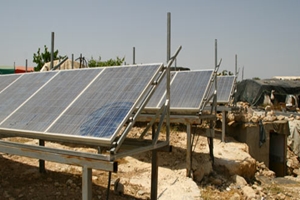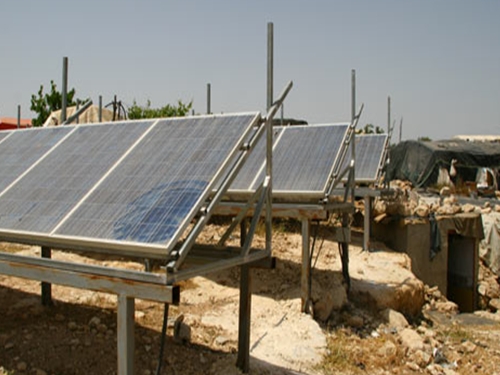
On Tuesday, 12 June, Israel’s Civil Administration distributed demolition orders to 52 temporary structures in the Palestinian village of Susiya in the South Hebron Hills. The orders stated that they were renewals of demolition orders originally issued in the 1990s. Residents were given three days, until 15 June 2012, to appeal the orders through the Civil Administration’s Supreme Planning Council.
The structures that Israeli occupation forces is threatening to demolish include at least seventeen residential tents which house over 100 people, and fourteen tents serving as kitchens. There are also demolition orders for a shop, a clinic, a community center, a structure used to store sheep’s milk prior to sale, solar panels, and a cave that serves as a Palestinian cultural museum, as well asshelters for sheep and chickens, and granaries. If the demolition orders are carried out, this will be the third time that Israel has tried to expel the residents of Susiya from their lands. Susiya residents have lived in this region on a seasonal basis since at least the 19th century. In 1983 the settlement of Susiya was established on occupied West Bank Palestinian land that was declared “state land” by Israel.

Solar panels supplying electricity to the residents of Susiya (Photo: B’Tselem)
According to MK Dov Khenin (Hadash): “The Israeli planning regime in Area C, which is under full Israeli control, allows almost no building or development in the Palestinian villages in these areas. In the South Hebron Hills, Israel’s policy has included expulsion of the residents of other villages. By contrast, Israel has avoided enforcing planning and building laws on the settlers’ outposts erected in the area illegally and without permits in the settlements Havat Ma’on, Avigayil, Mitzpe Yair, Suseya North-West, Nof Nesher and Asaha’el, and has allowed them to connect to the water and electricity infrastructure. The residents of Susiya claim ownership of about 3,000 dunams of agricultural land, on which there are 30 water holes, close to the Susiya settlement. The army has issued orders prohibiting the residents from entering or farming on a major portion of these lands.”
According to B’Tselem – The Israeli Information Center for Human Rights in the Occupied Territories, as the occupying power, Israel is obligated to act for the benefit and welfare of the residents of the occupied area. Israel is violating international law in not preparing a building plan for the village of Susiya while instead attempting to expel its residents. Next Friday, June 23, will be held a demonstration against the occupation policy in South Hebron Hills by the Palestinian residents of Susiya and Israeli peace activists.


